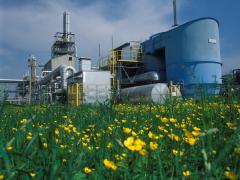Competition for land
A key challenge for humanity is how a future global population of 9 billion can all be fed healthily and sustainably. Here, we review how competition for land is influenced by other drivers and pressures, examine land-use change over the past 20 years and consider future changes over the next 40 years.
Competition for land, in itself, is not a driver affecting food and farming in the future, but is an emergent property of other drivers and pressures. Modelling studies suggest that future policy decisions in the agriculture, forestry, energy and conservation sectors could have profound effects, with different demands for land to supply multiple ecosystem services usually intensifying competition for land in the future.
In addition to policies addressing agriculture and food production, further policies addressing the primary drivers of competition for land (population growth, dietary preference, protected areas, forest policy) could have significant impacts in reducing competition for land. Technologies for increasing per-area productivity of agricultural land will also be necessary. Key uncertainties in our projections of competition for land in the future relate predominantly to uncertainties in the drivers and pressures within the scenarios, in the models and data used in the projections and in the policy interventions assumed to affect the drivers and pressures in the future.
Authors
Specifications
- Publication title
- Competition for land
- Publication date
- 27 September 2010
- Publication type
- Publication
- Magazine
- Phil. Trans. R. Soc. B, vol. 365, no. 1554, pages 2941-2957
- Product number
- 92526




